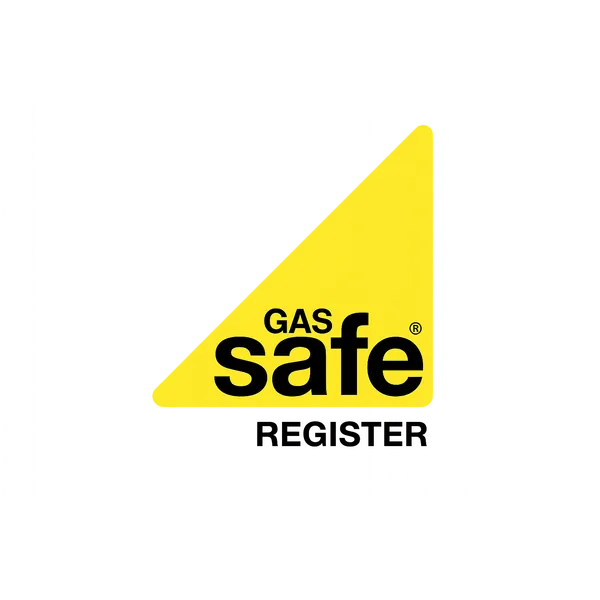Why Your Well-Insulated Home Needs a Proper Ventilation System
In the pursuit of energy efficiency and reduced heating costs, UK homeowners have embraced insulation like never before. From loft insulation upgrades to cavity wall insulation and draught-proofing measures, we've become experts at sealing our homes against the elements. However, this drive towards airtightness has created an unexpected paradox: the better insulated your home becomes, the more critical proper ventilation becomes for your health, comfort, and the building's structural integrity.
The Airtightness Paradox: Efficiency vs. Air Quality
Modern building standards have prioritised energy efficiency through improved airtightness, with new homes achieving impressive thermal performance ratings. While this reduces heating costs and carbon emissions, it creates what industry professionals call the "airtightness paradox."
In traditional, draughty homes, natural ventilation occurred through gaps around windows, doors, and floorboards. This constant air exchange, while inefficient for heating, provided fresh air and removed moisture and pollutants. Today's well-insulated homes eliminate these unintentional air leaks, trapping indoor air pollutants, moisture, and stale air inside.
Without intentional ventilation systems, homeowners face a difficult choice: open windows and waste energy, or keep them closed and compromise indoor air quality. Neither option aligns with the goals of modern, sustainable living.
Moisture Buildup: The Silent Threat to Your Home
Moisture accumulation represents one of the most significant risks in tightly sealed homes. The average UK household generates substantial moisture daily through:
- Cooking activities: Boiling water, frying, and baking
- Bathing and showering: Steam from bathrooms
- Breathing and perspiration: From occupants
- Drying laundry: Especially when dried indoors
- Houseplants and aquariums: Natural evaporation
Without adequate ventilation, this moisture has nowhere to escape. The consequences can be severe:
Condensation and Mould Growth
When warm, moist air meets cold surfaces like windows, walls, or corners, condensation forms. This damp environment becomes a breeding ground for mould spores, which can trigger respiratory issues, allergies, and asthma attacks.
Structural Damage
Persistent moisture can penetrate building materials, leading to:
- Timber decay and rot in roof structures and floor joists
- Plaster deterioration and wallpaper peeling
- Corrosion of metal fixtures and fittings
- Reduced insulation effectiveness as damp materials lose thermal resistance
Health Implications
Damp conditions and mould growth contribute to:
- Increased risk of respiratory infections
- Aggravation of existing respiratory conditions
- Allergic reactions and skin irritations
- General discomfort and reduced wellbeing
Indoor Air Quality: Beyond Moisture Control
While moisture control is crucial, ventilation addresses a broader spectrum of indoor air quality concerns:
Volatile Organic Compounds (VOCs)
Modern homes contain numerous sources of VOCs, including:
- Furniture and flooring treatments
- Cleaning products and air fresheners
- Paints, varnishes, and adhesives
- Building materials and insulation
These compounds can off-gas for months or years, contributing to poor indoor air quality and potential health effects.
Carbon Dioxide Buildup
In tightly sealed spaces, CO₂ levels can rise significantly from normal breathing. Elevated CO₂ concentrations can cause:
- Headaches and dizziness
- Fatigue and reduced concentration
- General discomfort and restlessness
Allergens and Particulates
Dust mites, pet dander, pollen, and other allergens accumulate without proper air exchange, exacerbating allergy symptoms and respiratory conditions.
UK Building Regulations: Part F Compliance
The importance of ventilation is recognised in UK Building Regulations, specifically Part F: Ventilation. These regulations mandate adequate ventilation systems in all new builds and major renovations:
Whole-Dwelling Ventilation
Part F requires mechanical ventilation systems that provide continuous background ventilation throughout the entire dwelling, ensuring a minimum air change rate.
Extract Ventilation
Specific high-moisture areas (kitchens, bathrooms, utility rooms) require mechanical extract ventilation to remove moisture and pollutants at source.
Performance Standards
Ventilation systems must meet specific performance criteria for:
- Minimum extract rates from wet rooms
- Background ventilation rates
- System noise levels
- Energy efficiency
Compliance with Part F isn't just about meeting regulations—it's about ensuring your home remains healthy, comfortable, and structurally sound for years to come.
Balanced Ventilation Principles: The Modern Solution
Modern ventilation systems have evolved beyond simple extractor fans to provide comprehensive, energy-efficient solutions:
Mechanical Extract Ventilation (MEV)
MEV systems provide continuous, low-level extraction from wet rooms while supplying fresh air through background ventilators in living areas and bedrooms. This creates a gentle airflow throughout the home.
Mechanical Ventilation with Heat Recovery (MVHR)
For the ultimate in energy efficiency, MVHR systems extract stale air while recovering heat from it, then supply fresh, filtered air that's pre-warmed. This maintains excellent air quality without compromising thermal comfort.
Demand-Controlled Ventilation
Smart systems can adjust ventilation rates based on:
- Humidity levels
- Occupancy detection
- CO₂ concentrations
- Time of day and usage patterns
This ensures optimal air quality while minimising energy consumption.
CRG Direct's Whole-House Approach: Insulation Plus Ventilation
At CRG Direct, we believe that proper insulation and effective ventilation should work together, not against each other. Our integrated approach ensures your home achieves both energy efficiency and healthy indoor environments:
Comprehensive Assessment
We begin with a thorough evaluation of your home's:
- Current insulation levels and airtightness
- Existing ventilation provisions
- Moisture sources and air quality concerns
- Occupancy patterns and lifestyle factors
Tailored Solutions
Based on our assessment, we design ventilation systems that complement your insulation strategy:
- For existing homes: MEV systems that integrate with current insulation
- For new builds: MVHR systems as part of comprehensive energy-efficient design
- For renovations: Hybrid approaches that balance performance with practicality
Professional Installation
Our certified technicians ensure:
- Correct system sizing and placement
- Minimal disruption during installation
- Integration with existing building services
- Compliance with all relevant regulations
Ongoing Support
We provide:
- System maintenance and servicing
- Performance monitoring
- User guidance for optimal operation
- Troubleshooting and upgrades as needed
The Benefits of Proper Ventilation
Investing in a proper ventilation system delivers multiple benefits:
Health and Comfort
- Reduced risk of respiratory issues and allergies
- Elimination of musty odours and stale air
- Consistent comfort levels throughout the home
- Improved sleep quality and general wellbeing
Property Protection
- Prevention of condensation and mould growth
- Protection of building fabric and finishes
- Preservation of insulation effectiveness
- Maintenance of property value
Energy Efficiency
- Reduced heating costs through controlled ventilation
- Elimination of energy waste from unnecessary window opening
- Potential heat recovery with advanced systems
- Compliance with energy performance standards
Making the Right Choice for Your Home
When considering ventilation for your well-insulated home, key factors include:
Building Type and Age
- New builds typically suit MVHR systems
- Older properties may benefit from MEV solutions
- Period properties require careful integration
Occupancy and Lifestyle
- Family size and composition
- Cooking and bathing habits
- Allergy sensitivities and health considerations
- Home working arrangements
Budget and Priorities
- Initial investment vs long-term savings
- Health benefits vs energy efficiency
- Maintenance requirements and running costs
Conclusion: Breathing Easy in an Efficient Home
The journey towards energy efficiency shouldn't compromise indoor air quality or occupant health. Proper ventilation is not an optional extra but an essential component of any well-insulated home. By understanding the airtightness paradox and implementing appropriate ventilation solutions, homeowners can enjoy the benefits of energy efficiency without the drawbacks of poor indoor air quality.
At CRG Direct, we're committed to helping UK homeowners achieve the perfect balance between insulation and ventilation. Our whole-house approach ensures your home remains comfortable, healthy, and efficient for years to come.
Ready to breathe new life into your well-insulated home? Contact CRG Direct today for a comprehensive ventilation assessment and discover how we can help you achieve the perfect balance of energy efficiency and indoor air quality.















